Introduction
Are you, or someone you love celebrating a birthday in January? If so, you are fortunate because the birthstone for January is Garnet.
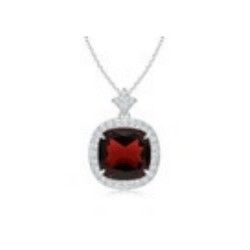
Click HERE for details
I'm going to say upfront that I have a deep appreciation and indeed LOVE for garnets. And one variety, Demantoid, an extremely rare and valuable gemstone, is actually my favorite, I will tell you why a little later.
Garnets, in general, have so many advantageous properties, that not only make them beautiful but extremely wearable gemstones.
Colors
When most people think about garnets, they think of a deep, rich red color, but this January birthstone can be found in a range of hues that may be more appealing to you if you are not a big fan of red. This gives you more options to choose from than you probably thought!
Those of you of a certain age will remember Garnet jewelry from the 70s - does the ring below look familiar? Today they are collectibles.
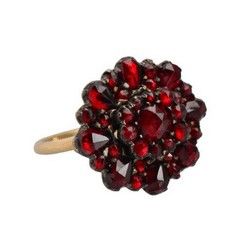
While a deep red hue was traditionally designated to be the stone for January, let's take a look at a few of the other varieties and their beautiful colors.
Note that if you find a favorite you may have to search online first to find what you are looking for as not too many mainstream jewelers carry a wide selection.
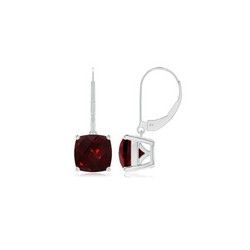
Click HERE for details
You will also notice that within each hue there is also a range of lighter or darker stones and colors that have secondary colors, etc. But no doubt you will find one you love.
Almandite Garnet: Sometimes called Almandine Garnet.
- Colors: Reddish orange to red, or purple-red: typically deep red hue in tone.
- Hardness: 7-7.5
- Toughness: Fair-Good
- Surface Luster: Subadamantine (surface light reflections are just below those of diamonds)
- Size Range: Stones up to ten carats.
- Dispersion: 0.24
- Interesting Facts: Garnet was known in ancient and medieval times for its healing effects. Its name is related to bright red pomegranates.
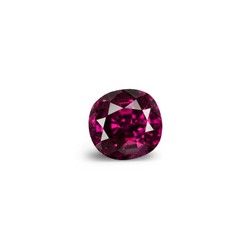
Andradite Garnet: Demantoid Garnet The unusual and beautiful internal characteristics found in demantoids are fine golden rutile strands that sometimes resemble horsetails. This feature is what makes demantoids so rare and valuable.
- Color: Light green-dark green, yellow-green
- Hardness: 6.5-7
- Toughness: Fair-Good
- Surface Luster: Glasslike-Subadamantine (surface light reflections are just below those of diamonds)
- Size range: Very rarely found in sizes larger than three carats.
- Dispersion: the ability to break up and radiate light into its rainbow colors: 0.57, higher than diamond at 0.44.
- Interesting Fact: The best quality found in the Ural Mountains in Russia. Click HERE for a detailed view.
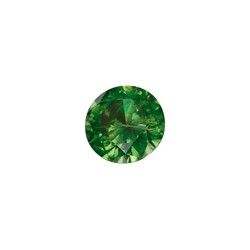
Grossularite Garnet: Tsavorite
Tsavorite Garnet
- Colors: intense green to yellow-green
- Hardness: 7-7.5
- Toughness: Fair-Good
- Surface Luster: Glasslike
- Size Range: Rarely larger than three carats
- Dispersion: 0.28
- Interesting Facts: Discovered in 1967- Identified by Tiffany &Co. Mined in only three locations: Kenya (Tsavo National Park) Madagascar and Tanzania
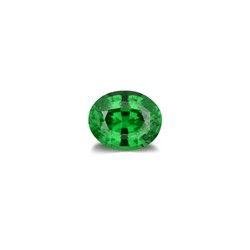
Pyrope Garnet:
- Colors: Medium to dark reddish-orange, red through purple-red
- Hardness: 7-7.5
- Toughness: Fair to Good
- Surface Luster: Glasslike
- Size Range: Rarely found over two carats
- Dispersion: 0.22
- Interesting Fact: “Bohemian garnets” rose-cut pyrope from the Czech Republic – were very popular in the 1970s. Set in gold vermeil (gold plated silver) brooches, rings, and pendants in floral cluster designs are today collector pieces.
- Pyrope will bring the wearer good luck and good fortune
Image above.
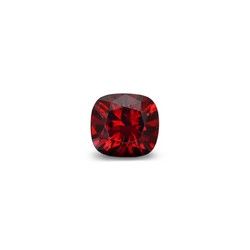
Rhodolite Garnet:
- Colors: purplish-red or pinkish-purple-red
- Hardness: 7.5 on the Mohs scale
- Toughness: Fair-Good
- Luster: glasslike
- Size Range: Up to ten carats
- Dispersion: 0.25
- Interesting Fact: Considered one of the most beautiful gemstones, Rhodolite falls in between pyrope and almandine and is more transparent. It can also change color from red to green in different light sources. The most expensive of the red garnets.
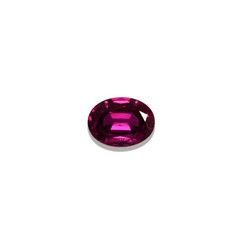
Spessartite Garnet:
- Colors: Transparent yellowish-orange to dark reddish-orange
- Hardness: 7-7.5
- Toughness: Fair-Good
- Luster: Glasslike-Subadamantine
- Dispersion: 0.27
- Size Range: up to ten carats
- Interesting Facts: A pumpkin-colored Spessartite from Namibia (called Mandarin Garnet) is the most valuable of the Spessartites.
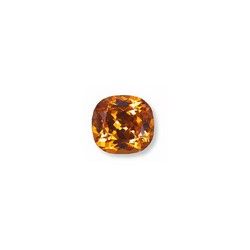
Where Does Garnet Come From?
In addition colored garnet was discovered in Kenya, Madagascar, and Tanzania. Garnet has been found in Egypt Sri Lanka and the U.S.
Today the range of garnets is widely distributed across the world in more than 30 nations.
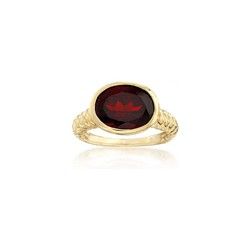
Click HERE for details
Caring For Your Garnets
- Using a mild jewelry cleaner or warm water, liquid soap, and a soft toothbrush will keep your garnets sparkling clean.
- Be sure to store your garnets in a soft jewelry case or bag.
- Remember to have your jewelry inspected periodically to ensure your stones are secure.
In Conclusion
To recap the reasons Garnet is a fantastic gemstone, here is a summary of its attributes:
- Available in a variety of gorgeous colors
- Resistant to scratching; suitable for everyday wear
- Most varieties have great clarity, few internal characteristics that diminish the beauty or threaten durability
- Garnets have no need for any type of gemstone enhancements (treatments that improve the appearance or durability.)
- Many radiate rainbow colors, some even having a surface luster close to that of diamonds.
- Certain varieties such as almandine or pyrope are quite affordable
- If you are lucky enough to find a Demantoid garnet with spectacular horsetail inclusions, you have a real collectors' gemstone on your hands.
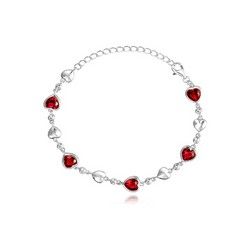
Click HERE for details
FAQs
What does " garnet group" mean?
Gemstone groups have similar physical properties but vary in chemical composition which influences their color. Other gemstone groups are feldspar and tourmaline.
Are garnets valuable?
Garnets are available in a wide range of price points. The most valuable being Demantoid garnet and followed by high-quality Rhodolites and Tsavorites.
Why is garnet chosen as January's Birthstone?
Garnet represents January's birthstone. Garnet was very popular throughout Europe from the Victorian era and the 1970s. Garnets are also believed to strengthen friendships.
Is garnet a rare birthstone?
Large stones and those that exhibit exceptional color are rare and sell for premium prices. Demantoid is the most rare of all the varieties of Garnet.
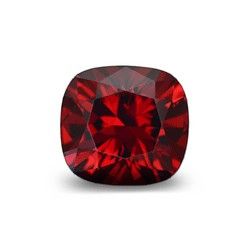
For additional information on gemstone quality and grading, read our article:
Amethyst: February's Birthstone
Aquamarine: March's Birthstone
Thank you for reading our article and please leave your questions and comments below in the comments section.
Francesca de Granville, G.G. (GIA) F.G.A.
When you purchase through our links, we may receive a small commission. Prices are exactly the same for you if your purchase is made through an affiliate or a non-affiliate link.
You will not pay more by clicking through our links.
To read our full Affiliate Disclosure click HERE


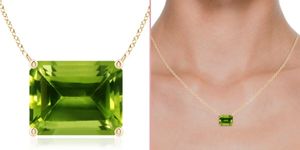
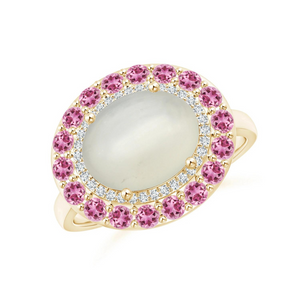
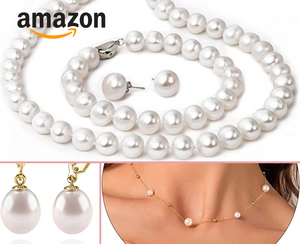

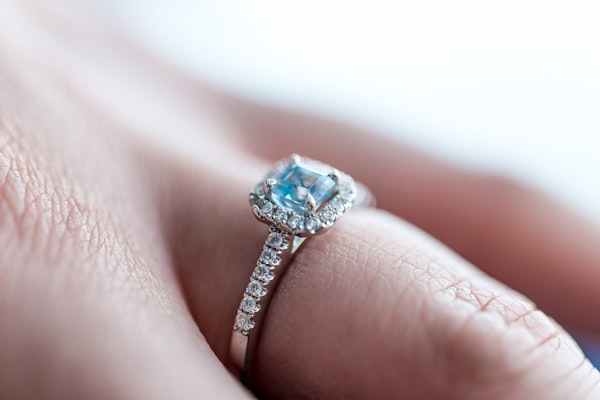



Member discussion